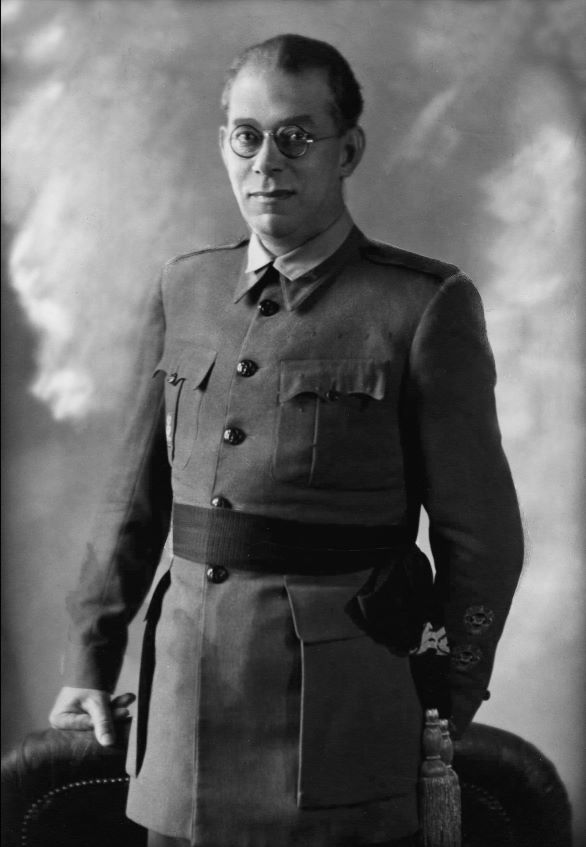"Target Gernika”

General Emilio Mola, commander in chief of the Spanish Northern Army in charge of occupying Bilbao
Three main factors determined a massive terror bombing event in the Basque Country
Distress of the Spanish General Staff
- Considering the slow advance of the coup units, enemies of Göring in Berlin and Mola in Burgos circulated the rumor that Bilbao was not going to fall. Just as Hugo Sperrle, head of the German Condor Legion, was being pressured by Berlin, Ettore Bastico, head of the Italian units, was being pressured by Mussolini, who needed a quick victory over Bilbao to make up for the Guadalajara disaster.
- The German and Italian commanders blamed General Mola for the slow progress, disqualifying him before Franco. Mola explained to Richthofen that his plan was to destroy Bizkaia's industry in order to root out Basque nationalism “to clean up Spain.” Richthofen replied “very clearly and unambiguously,” that he had never heard “such idiocy” before.
Göring's personal interest in the bombing
- Göring wanted to convince Hitler that the air force was his best weapon and, therefore, he had to show him that the Luftwaffe was capable of carrying out actions that were not within the reach of the infantry or the navy, such as sinking ships or burning urban centers away from the front. By achieving this, he would be in a position to convince Hitler that he should invest in fighters and bombers and that the person in command of this force should be the second strongman of the Reich.
- Hitler's birthday, April 20, was one of the three most important holidays in Nazi Germany. Göring intended to offer a bombing as a gift to the Führer, as he would later do on April 20, 1940 in Namsos; in 1941 in Athens and London; and in 1942 in Malta. The most massive and devastating Luftwaffe bombings occurred on Hitler's birthday. However, in 1937 it could not be, and to Göring’s distress the bombing was delayed to the following Monday, April 26.
The order to bomb Gernika
- The commanders of the Italian and German air forces, Vincenzo Velardi and Wolfram von Richthofen, understood that the capture of Bilbao required intensifying the terror bombings, through “a decisive blow” that caused the surrender of the Basque forces.
- Richthofen was experimenting with more effective tactical and terror bombing strategies, preparing the Luftwaffe for "the next war." Gernika offered him the opportunity to demonstrate the destructive capacity of the aerial weapon, and to test the new experimental bombers and bombing techniques such as “Koppelwurf” (corral bombing) and the new ground attack techniques (aerial strafing).
- Franco needed to take an important city like Bilbao to be recognized as a “belligerent” on an international level, and Mola needed to advance more quickly after having publicly announced at the start of the offensive, on March 31, 1937, that he “would take Bilbao in three weeks.” Therefore, the two were also in favor of implementing “a decisive blow.”
- As Richthofen expressed in writing, the order to bomb Gernika was issued to the Condor Legion by the rebel headquarters. Furthermore, by virtue of article 3 of the General Instructions for Liaison with the Air Forces, remote bombing orders could only be issued by Franco. In sum, only Franco could order the bombing of Gernika, and so he did.
Seven main reasons for choosing Gernika as a target

The Tree of Gernika was an early target of Spanish centralist aspirations. Under the motto “Ancient Laws and Petrol” (literally, we must burn the tree of Gernika) General Espartero gave an order in 1835 to burn the oak of Gernika, the Parliament of Bizkaia, and the whole town
There were many cities that the rebel command could have chosen to bomb, but seven main reasons determined the fate of Gernika.
- Gernika had an adequate size. The city was large enough to be a military objective and small enough to be destroyed in its entirety with the number of aircraft and the quantity and quality of the explosives available to the rebels in April of 1937.
- The town was about 23 kilometers (14.3 miles) from the front line, so it could be occupied a few days after the attack, before the International Committee of the Red Cross, the press, or other international organizations could report, take photographs, or get any other type of physical evidence of the bombing.
- The city was completely defenseless and did not have anti-aircraft batteries.
- Most of the buildings in the town were stuck to one another in closed blocks, separated by narrow streets, and had internal wooden structures, which would prove the usefulness and destructive capacity of the new German incendiary bombs that would be dropped by the thousands after the 250 kilos of explosive bombs.
- Gernika was one of the wartime district capitals, and the front in the Markina sector depended on its weekly market and its three hospitals. The destruction of these resources would spell disaster for the front at Markina.
- Gernika had not been bombed before. Richthofen needed to experiment and measure the results of his raids on the ground, but since most of the population centers were being bombarded by German, Italian, and Spanish units, it was difficult to know the effect of the Luftwaffe units’ attacks specifically. Gernika was suitable for a war experiment.
- Gernika, seat of the oak tree that symbolizes representative democracy and Basque freedom, a place venerated by the Basque people, was an ideal target to break the morale of the Basque troops, which would be required for them to surrender the day after the bombing under the threat of repeating these attacks against other Basque cities. It was not the first time that Gernika had become the target of the wrath of generals of different colors. Under the slogan of the Liberal Party—“Ancient Laws and Petrol”—General Baldomero Espartero gave an order in 1835, one hundred years before the bombing, to burn the oak of Gernika, the Parliament of Bizkaia, and the whole town, and to place an inscription on its ruins reading: “Here was Gernika.” Gernikako arbola (The Tree of Gernika), a poem composed in 1853 by Jose M. Iparragirre, is still considered by many Basques the unofficial anthem of the Basque Country, and the oak itself the symbol of the freedoms and democratic virtues of the nation. Therefore, it was foreseeable that the attack was going to have a strong impact on the Basque society. On the other hand, “liberties and democracy” were two of the “errors” that Franco and Mola sought to eradicate.
